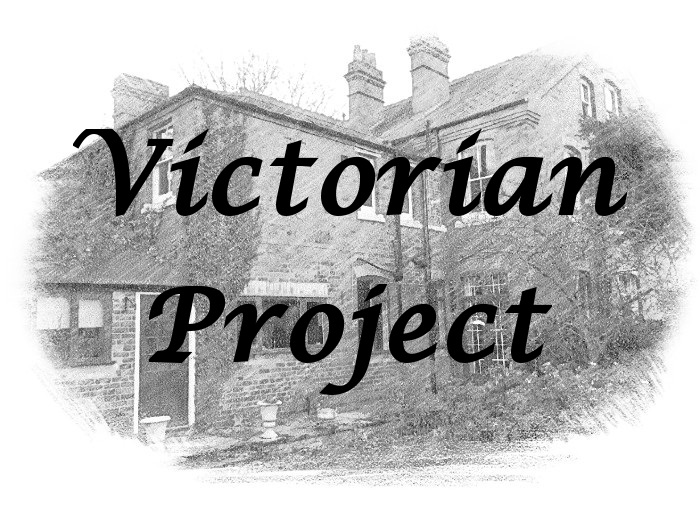Some of the early challenges we faced with our Victorian House renovation project were repairing the old slate roof and addressing the causes of damp. Out of control Ivy can be a contributor to both of these areas and so our next task was to get an Ivy invasion under control! Ivy can give an old property that traditional secret garden feel to it but if left unattended can cause significant damage to your home. The previous owners had let the plant run rife putting a real job in our hands to put right. In this ‘Remove Ivy from House’ article we show an example of an Ivy plant out of control and what you can do to put it back in its box.
What is the Victorian Project all about? Find out here.
Ivy Damage & How To Remove Ivy From House Altogether
The impact of Ivy
The Impact of Ivy – The Ivy plant will start at the ground level and work its way up a building wall attaching itself to the brickwork. It has a rather tight grip and when removed can take any loose mortar used in your brick pointing with it. When you successfully get the plant down you will need to spend a considerable amount of time scraping the remnants of the plant from the bricks to restore the original look of the walls. [See also: 10 ‘Gotchas’ when buying a Victorian House – Knowledge is Power]
When left unattended Ivy will continue in an upwards direction with the next stop being your guttering system. Once there it will intertwine with the gutters either pushing them away from the roof or blocking them. This makes them less efficient and potentially becoming a cause of damp in lower rooms from water overspill. [See also: Fix Damp in Victorian Houses and the Common Causes]

If the Ivy progresses past the guttering it will start to attach to your Victorian slate roof. This is more of a problem with extensions and lower level roofs but it can make its way up three stories. The plant can get under slates and cause them to move. This makes the plant extremely difficult to take down. The truth is that Ivy needs maintenance. If you want to keep it you need to ensure that you can cut it back at its highest point. [See also: Should I Get A Building Survey & Are House Surveys Worth It?]
To protect our home we simply wanted it gone and set about removing Ivy from every location.
Removing Ivy On our Victorian Project – There were two areas we needed to tackle. On the main property there were three separate Ivy plants running all the way from ground level three stories high. They had not yet attacked the guttering. The second and most challenging infestation was at the rear of the property. A single story kitchen extension had become home to a huge plant. More like a tree than a plant and this was intertwined with the roof slates and gutters. [See also: Remove Stubborn Wallpaper – Stripping Back]
How To Remove Ivy From Walls
If you want to remove the Ivy altogether then the first thing I recommend is to take a saw to the trunk of the plant close to the ground. This will cut off the water supply and eventually kill it off. I cut the base of each Ivy plant (some of the trunks were pretty thick!) and then left them for a couple of months. This time frame wasn’t deliberate but we had other things to focus on. [See also: Main Living Room Transformation (Before) -Decorating Begins]
At the end of the two month period the plants had clearly died. They turned a yellow colour throughout and became more brittle. A dead brittle Ivy plant is far easier to remove than one full of life. This works better in the summer months but if you find that your Ivy is particularly stubborn then there are chemicals available to deal the killer blow.
We had no need todo this. Once the Ivy was dead we had no need for ladders to take the plants down. Slowly walking away from the wall pulling on the plant at a 45-degree angle allowed the whole thing to come down in one piece. Be extremely careful however. If the plant has attached to gutters or roof slates you do not want to do further damage.
If you remove Ivy from brick walls the final step is to clean down the walls down and remove the final traces of the plant. This is straight forward and a combination of a scouring pad and wall paper scraper removed the stubborn stems. Ensure that due care is taken if you are working from height. Always remove ivy from walls if you are unable to maintain it at its highest point.
Ridding The Roof Of Ivy
The Ivy plant located on the single story kitchen extension roof was a beast. It had clearly been thriving there for years. We started to work on the issue using the same approach as above. We removed the plant all the way up the wall until we reached the roof slates. The photo below shows the extent of the problem.
After much deliberation we decided to hire a roofer to remove the remainder of the plant that had made it onto the slates for two reasons. Firstly, not being clued up on the structure of an old roof I did not know which areas would support my weight. Secondly, it was clear that the plant had lifted a number of slates and the chances were that roof repairs would be needed once the Ivy was removed. We found that hiring a roofer for Ivy removal is a funny one. Tending to plants and shrubs is really a gardener’s job but gardeners don’t work on slate roofs! The first few roofers we contacted we not interested.
Finally, we managed to find a good roofer willing to accept the job. For a fee of just £100 it took him around and hour to bring the plant to the ground. On removal we could see that there was indeed roof slate damage. The replacement and refitting of these was included in the fee. [See also: Victorian Roof Repairs – Starting Point for any Renovation]
Ivy Removal – Roundup
The fact is that Ivy can really complement both a house and garden but only when it is maintained. Removing Ivy from Victorian houses can be a challenge particularly when it has grown three stories high. Always consider the damage an Ivy plant can do and ensure that you keep it under full control. If like us your Ivy is running riot it can easily be removed. In our case the plant was damaging roof slates and was beginning to intertwine with the guttering. If you remove Ivy from brick it can take you some time to clear off the remnants. If you are in the same boat as us then definitely take action.






